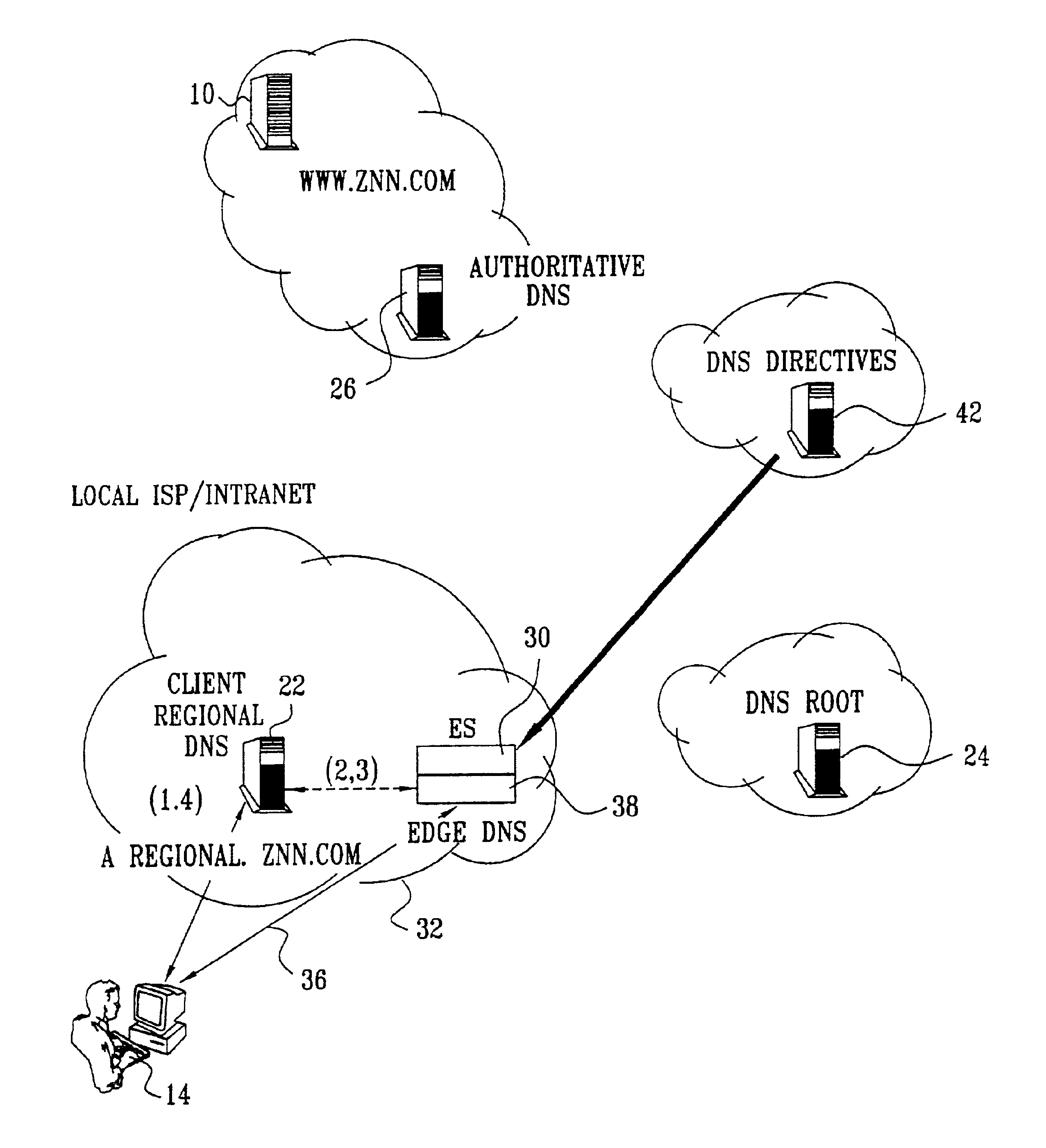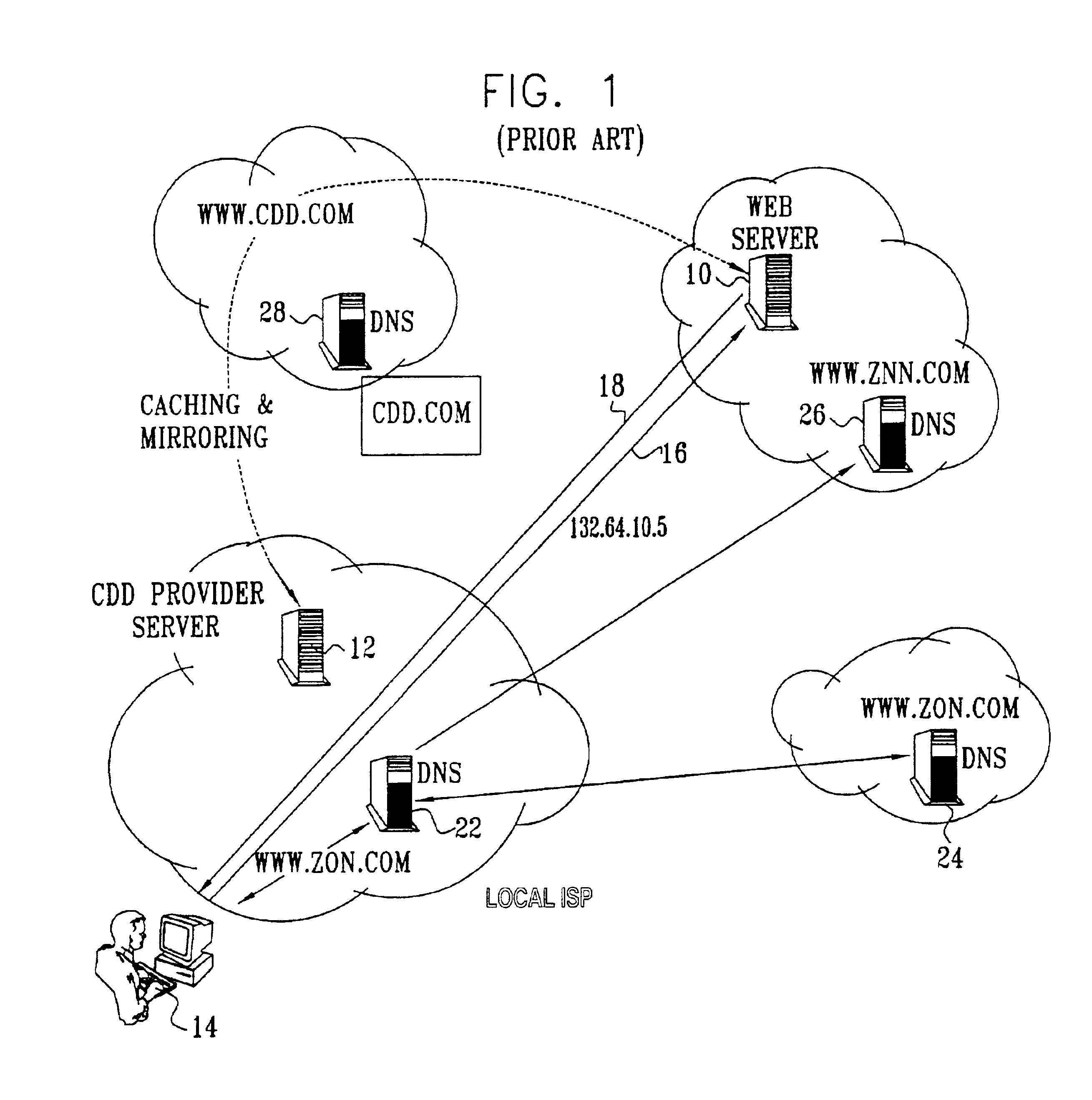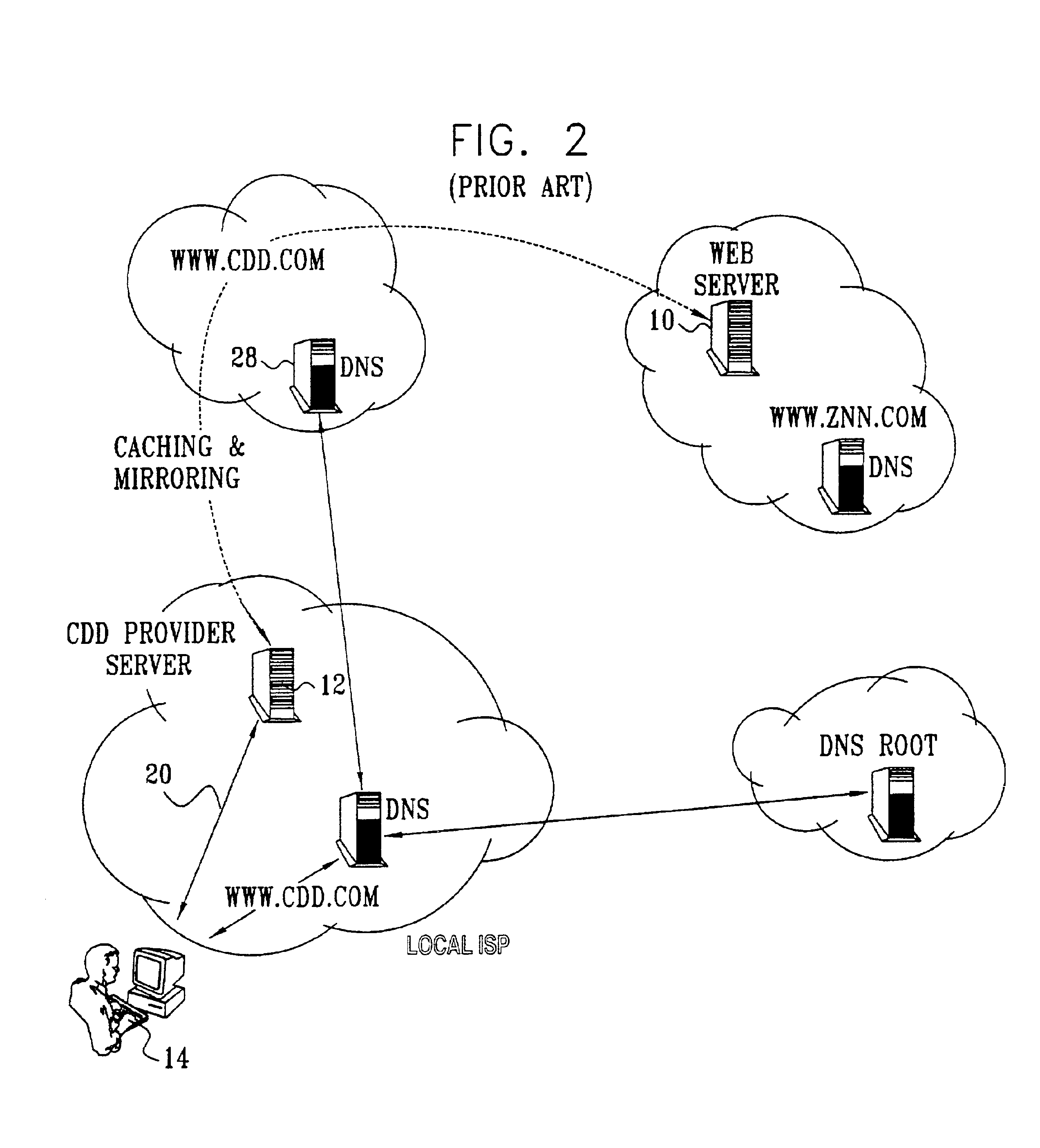Differentiated content and application delivery via internet
a content and application technology, applied in the field of data transmission over the internet, can solve the problems of imposing difficult scalability problems regarding the configuration of network elements, unable to use the dns redirection method, and only addressing these low level problems, so as to achieve decentralization and differentiation
- Summary
- Abstract
- Description
- Claims
- Application Information
AI Technical Summary
Benefits of technology
Problems solved by technology
Method used
Image
Examples
example
[0464]There is a Profile 100124 on U.S.A. The user can remove this profile from any subgroups, e.g. New York, by generating an exception for the New YOrk subgroup.
[0465]Profile 100124
[0466]URL: www.cnn.com / news / today.html[0467]edge server groups: U.S.A.[0468]Customer groups: gold, bronze.[0469]Time: every day[0470]22:00-23:30.
[0471]Exception 78965 Profile 100124
[0472]edge server groups: New York.
[0473]Action: Remove Profile
[0474]The user has 2 options to select content in a service program. First, in context-free content selection, as explained above, the service profile includes a set of URLs that can be identified by a common pattern in their name. A special “private” case occurs when the “pattern” is a single fully specified URL. In this method only the “pattern” is sent to the edge server, because the edge server can understand from the pattern whether the URL has a policy or not.
[0475]Second, in context-sensitive content selection, users mark pages through links to them from ot...
PUM
 Login to View More
Login to View More Abstract
Description
Claims
Application Information
 Login to View More
Login to View More - R&D
- Intellectual Property
- Life Sciences
- Materials
- Tech Scout
- Unparalleled Data Quality
- Higher Quality Content
- 60% Fewer Hallucinations
Browse by: Latest US Patents, China's latest patents, Technical Efficacy Thesaurus, Application Domain, Technology Topic, Popular Technical Reports.
© 2025 PatSnap. All rights reserved.Legal|Privacy policy|Modern Slavery Act Transparency Statement|Sitemap|About US| Contact US: help@patsnap.com



